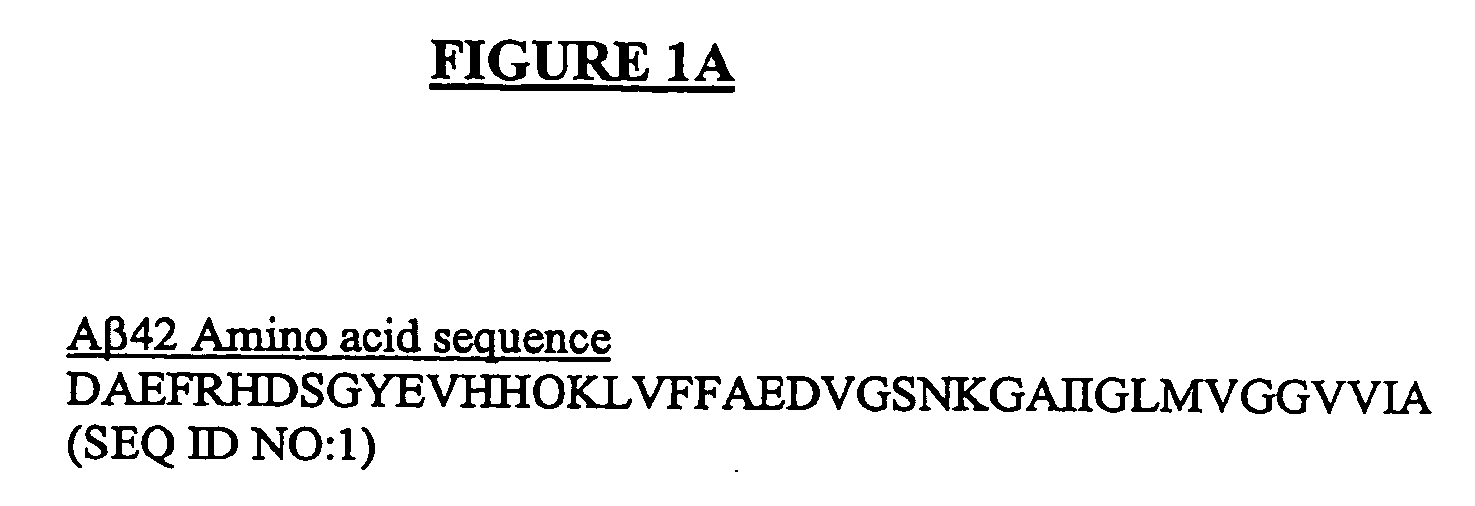Model for neurodegenerative disorders
a neurodegenerative disorder and model technology, applied in the field of models for neurodegenerative disorders, can solve the problems of reducing climbing ability, reducing flying ability, and reducing the ability to climb
- Summary
- Abstract
- Description
- Claims
- Application Information
AI Technical Summary
Benefits of technology
Problems solved by technology
Method used
Image
Examples
example 1
Generation of a Aβ42 / Tau Double Transgenic Fly
[0105] To generate an Aβ42 / Tau double transgenic fly, a transgenic Drosophila melanogaster strain containing a transgene encoding Tau and a transgenic Drosophila melanogaster strain containing a transgene encoding human Aβ42 peptide were generated as described herein. The two transgenic fly strains were then crossed to obtain a double transgenic Drosophila melanogaster strain containing both Tau and human Aβ42 genes.
Transgene Constructs
[0106] The UAS / GAL4 system was used to generate both the Aβ42 and Tau transgenic flies. A cDNA encoding the longest human brain Tau isoform was cloned using standard ligation techniques (Sambrook et al., Molecular Biology: A laboratory Approach, Cold Spring Harbor, N.Y. 1989) into vector pUAST (Brand and Perrimon, Development 118:401-415 (1993)) as an EcoRI fragment in order to generate transformation vector, pUAS:2N4RTauwt. A schematic of the construct showing Tau inserted downstream of a UAS control ...
example 2
Screening for a Therapeutic Agent
[0119] 1. To screen for a therapeutic agent effective against Alzheimer's disease, candidate agents are administered to a plurality of the Aβ42Iowa / Tau transgenic fly larvae that carry the gmr-GAL4 driver and the transgenes UAS:aos-Aβ42Iowa alone or in combination with UAS:2N4RTauwt. Candidate agents are microinjected into third instar transgenic Drosophila melanogaster larvae (three to 5 day old larvae). Larvae are injected through the cuticle into the hemolymph with defined amounts of each compound using a hypodermic needle of 20 gm internal diameter. Following injection, the larvae are placed into glass vials for completion of their development. After eclosion, the adult flies are anesthetized with CO2 and visually inspected utilizing a dissecting microscope to assess for the reversion of the Drosophila eye phenotype as compared to control flies in which a candidate agent was not administered. An observed reversion of the Aβ42Iowa / Tau transgenic ...
PUM
 Login to View More
Login to View More Abstract
Description
Claims
Application Information
 Login to View More
Login to View More - R&D
- Intellectual Property
- Life Sciences
- Materials
- Tech Scout
- Unparalleled Data Quality
- Higher Quality Content
- 60% Fewer Hallucinations
Browse by: Latest US Patents, China's latest patents, Technical Efficacy Thesaurus, Application Domain, Technology Topic, Popular Technical Reports.
© 2025 PatSnap. All rights reserved.Legal|Privacy policy|Modern Slavery Act Transparency Statement|Sitemap|About US| Contact US: help@patsnap.com



